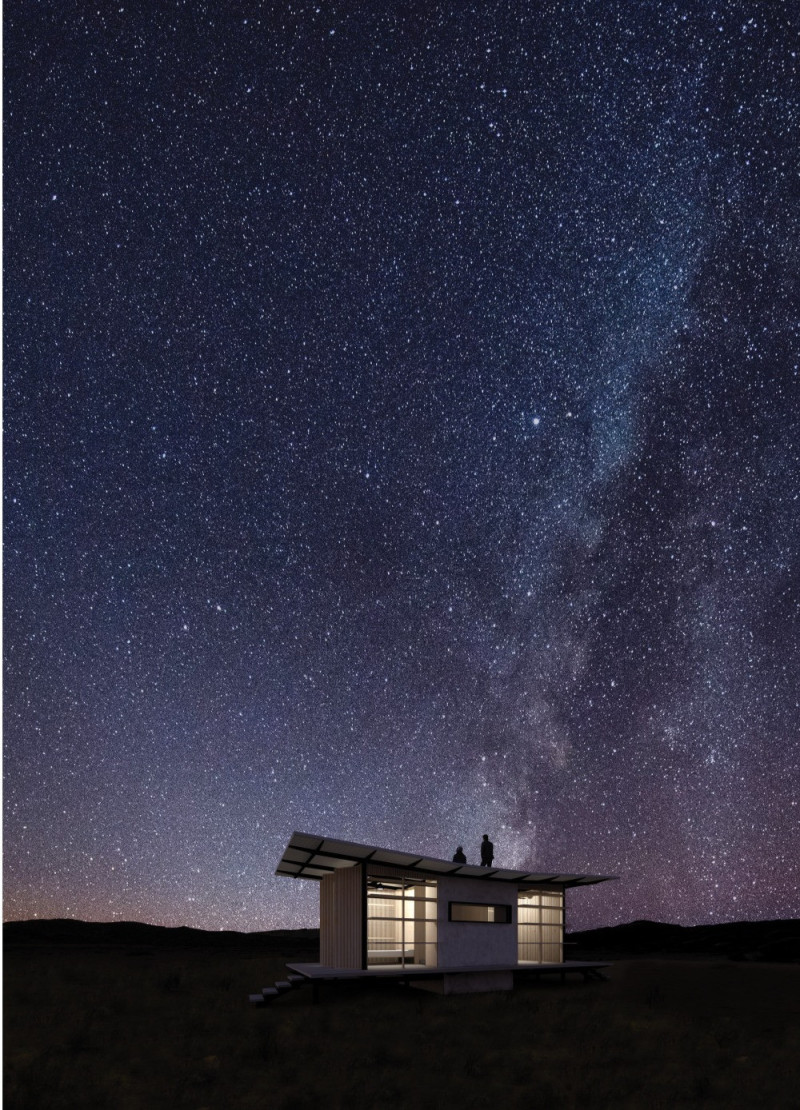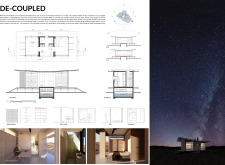5 key facts about this project
The architectural retreat in remote West Texas offers a unique living space designed for two occupants, without the expectation that they are a couple. Known as "De-coupled," the design focuses on flexibility, allowing the individuals to choose how much they wish to engage with each other and their environment. Set against the rugged terrain and varying climate of Terlingua, the residence emphasizes both private and shared experiences.
Building Structure
A concrete core serves as the central element of the design. This structure houses important facilities such as a bathroom, kitchen, and storage. With its solid material, the core effectively regulates temperature, which is critical for comfort in a region where temperatures can fluctuate greatly. The core's design maximizes efficiency and anchors the retreat in its landscape.
Facade and Environmental Response
The operable double screen facade stands out as a key feature. It adapts to changing weather conditions, managing sunlight exposure and ventilation. This dynamic facade enhances the living environment by allowing light to enter while also providing privacy. It frames views of the scenic landscape, creating a connection between the occupants and their surroundings.
Interior Spatial Organization
Inside the retreat, two flexible spaces provide each occupant with their own area. This layout places importance on adaptability and personal comfort. While the spaces allow for privacy, they also facilitate shared experiences. The overall organization encourages residents to define how they want to use their home, balancing solitude and interaction.
Every aspect of the design reflects careful consideration of the environment and the needs of the occupants. The interplay between shared and private spaces allows for a harmonious living experience, while the architectural elements work together to respond to the challenges posed by the desert landscape. The result is a thoughtful dwelling that encourages individual comfort within a collective context.



















































